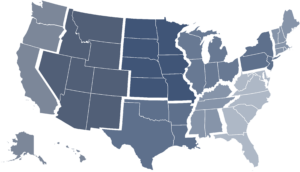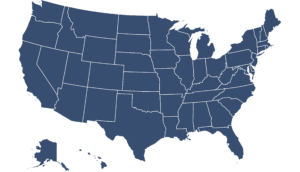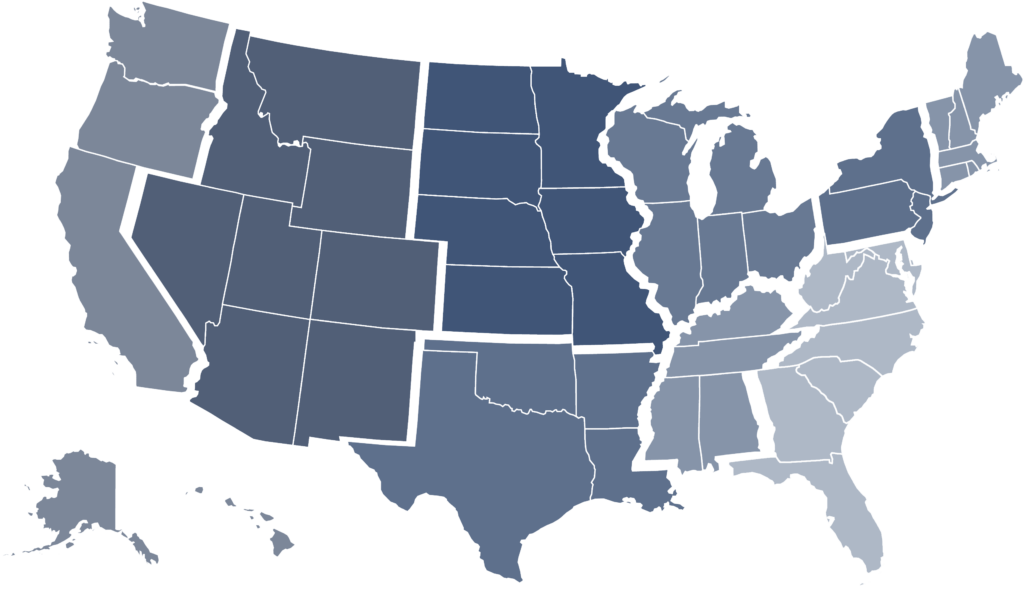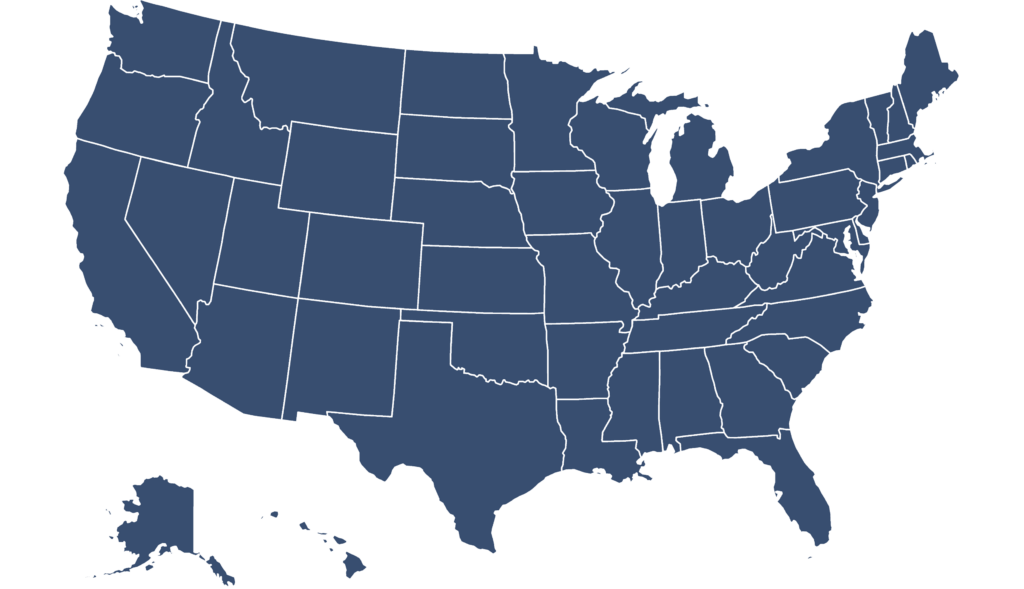Organized Real Estate
Realtor associations and MLSs are collectively referred to as “organized real estate,” which represents the infrastructure upon which the residential real estate brokerage industry functions. These organizations play a major role in setting industry professionalism; they advocate at the national, state and local level for homeownership and major issues that support their members’ business and manage local MLSs, which enable the buying and selling of houses, apartments and other real estate.
This section first presents membership data and other information for all of the nation’s MLS organizations, local Realtor associations, and state Realtor associations with data as of December 31, 2023. In addition to national rankings, MLSs and local Realtor associations are ranked by the nine geographic divisions defined by the U.S. Census Bureau: Central, East North Central, East South Central, Middle Atlantic, Mountain, New England, Pacific, South Atlantic, West North Central, and West South Central.
The T3 Data team follows a rigorous methodology to source, verify and present the data presented in this and other Real Estate Almanac sections. Learn more about the methodology of this section here.
Multiple Listing Services
- Regional MLSs: owned by two or more Realtor associations or serve regional markets. At year-end 2023, there were 107 regional MLSs.
- Local MLSs: owned by a single local Realtor association and serve just a local market. At year-end 2023, there were 414 local MLSs.
The nation’s large regional MLSs have huge footprints, sophisticated technology, innovative business practices and well-run management structures. The largest MLSs serve members across a broad geographic area, sometimes statewide or even across multiple states. These include California Regional MLS (107,562 subscribers), Bright MLS (100,491 subscribers) and Florida-based Stellar MLS (83,900 subscribers). On the other side of the spectrum are small local MLSs. These organizations, which do not have as many resources, have memberships measuring in just the hundreds. Approximately 43% of the nation’s 521 MLSs have under 400 subscribers.
Since the early 1990s, the MLS industry has seen the large get larger as the small get smaller. This has continued in the last several years. For example, the number of MLSs has shrunk 7.3% from 562 to 521 and the average MLS subscriber count has grown 29.7% from 2,836 to 3,679 from year-end 2019 to year-end 2023.
View MLSs ranked nationally via the icon to the right.
Local Realtor Associations
As trade associations, Realtor associations are nonprofits owned by their members. They represent their members and aim to help them improve the quality of service they provide, their education and professional standards. The classic Realtor association mission is simple: to make members more profitable and more successful. Many also own and run a multiple listing service, either as the sole owner in the case of a Local MLS or as part of a group of other stakeholders in a Regional MLS.
Realtor associations come in three varieties, determined by geographic scope: national, state and local. Realtor associations have a federated makeup led by the National Association of Realtors: members cannot join just one. When agents join a local association, to gain access to the MLS, for example, they automatically join the state association in which the local is headquartered and NAR; the memberships are tied together in what is known as the three-way agreement.
The largest local Realtor associations have tens of thousands of members, and subsequently, healthy revenues that allow them to offer quality products and services to members and to play a large and meaningful role in their communities. Examples include the Miami Association of Realtors (56,725 members), the Houston Association of Realtors (45,444 members) and Broward, Palm Beaches and St. Lucie Realtors (37,895 members).
On the other end of the size spectrum lie small local Realtor associations, which, because of relatively small revenues and resources, can sometimes struggle to offer a core set of services to members and struggle for relevancy. The industry has a large number of these smaller associations.
Some local associations are consolidating but not many. From year-end 2022 to year-end 2023, the number of local Realtor associations dropped 0.9%. But they are getting larger. Over that same time period, the average member count grew 3.3%.
View local Realtor associations ranked nationally via the image to the right.
State Realtor Associations
State Realtor associations are the middle-tier between local Realtor associations and NAR in the federated, three-way Realtor structure explained in the section above.
State Realtor associations serve as the legislative and regulatory voices for real estate at the state level where many licensure laws and tax structures are established. Many provide essential services like education or benefits such as forms for members and local associations.
State Associations are also responsible for the annual core standards certification passed down from the National Association of Realtors with minimum service and organizational requirements that local associations must maintain to be chartered by NAR.
View the state Realtor associations ranked by year-end 2023 membership by clicking on the icon to the right.




